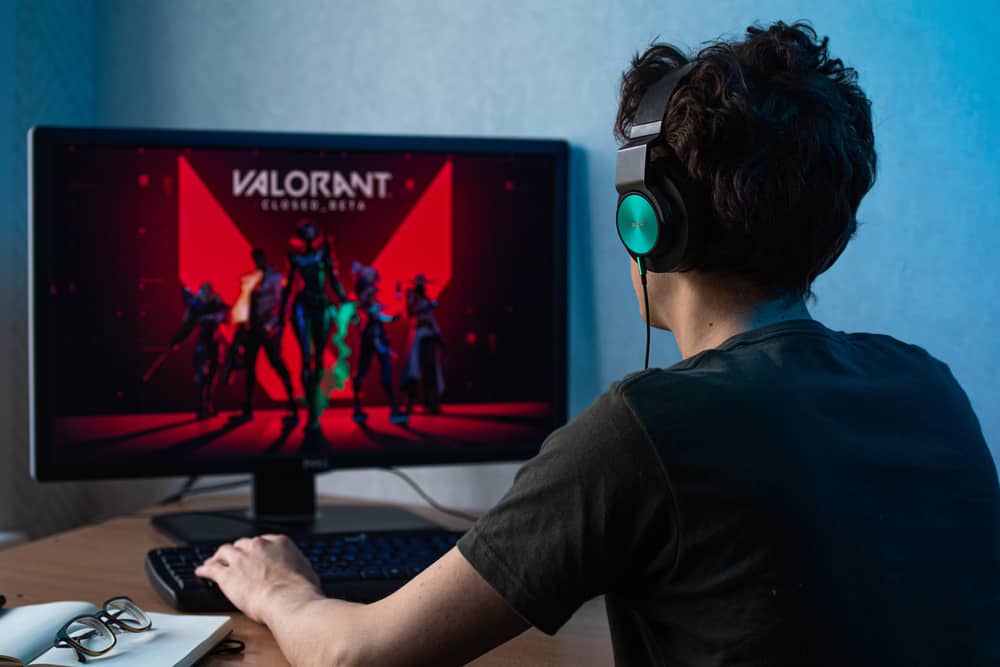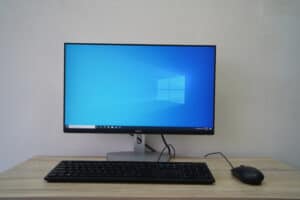
Valorant is one of the most popular FPS games in the world. Shortly after its release, it was being played by millions of players from different parts of the world. The game is currently only available for PC, and people play it on different setups. Some have a single monitor setup, while others own more than own displays. If you belong to the latter group and are wondering how to move Valorant to another monitor, continue reading our guide.
The quickest way to move Valorant to another monitor is by going to the “Display Settings” and selecting the “Duplicate” option. If you want to make Valorant appear only on the second monitor, you can click the “Show Only on 2” option.
PC users love creating amazing gaming setups. Some prefer having only a single display, while others love using two or more monitors. In some cases, they use the first monitor for work, while the other is meant for gaming as it might have a better refresh rate and display quality.
How To Move Valorant to Another Monitor
While people do end up placing multiple monitors on their setup, they get confused about how to move a game from one monitor to another. If you’re currently playing Valorant and cannot move it to your second monitor, then worry no more, as we will mention some methods through which you can do this quickly.
Method #1: Using the Display Settings
Moving Valorant to another monitor is a pretty simple task. You can do this by going to the “Display Settings”. The process is easy and will take you hardly a minute to do it.
- Turn on your PC and wait for the desktop to appear.
- Right-click anywhere on your desktop and select “Display Settings” from the menu that will pop up on your screen.
- Scroll down and find a section called “Multiple Displays”.
- Click it and select “Show only on 2”.
After you select the option, Valorant will start appearing on your second monitor. Remember that selecting this option will disable the first monitor, and you can only use the second one. To change it to how it was, you will need to go back to the “Display Settings” and select “Show only on 1” to make things appear on your first monitor again.
Method #2: Duplicating Monitors
You must select another option if you want Valorant to appear on both monitors. Duplicating your monitors is a simple task that won’t harm your computer.
- Right-click on your desktop to access the “Display Settings”.
- Scroll down to the “Multiple Display” option and click on it to open the drop-down menu.
- Click on “Duplicate these displays”.
Right after you click on it, both of your displays will become active. In other words, Valorant will appear on both monitors. Remember that the performance might differ if you use two different monitors. Furthermore, the colors won’t also match. Therefore, to get a smoother gameplay experience, we recommend getting two identical monitors.
Method #3: Extending Monitors
If you have watched some professional players on YouTube, you might have noticed that they can transform two monitors into a single one. Many people often get confused about how to do this, as it seems complicated. But in reality, it can be done with a single click. Don’t worry; you don’t need any special cable or adapter for this purpose.
- Open your “Display Settings”.
- Go to the “Multiple Displays” option and click on “Extend These Displays”.
- Launch Valorant on your first monitor and drag it to your second monitor. You might need to first go to the in-game settings of Valorant to enable “Windowed mode” so you can easily drag it to the second monitor.
You can now do different tasks on your first monitor, while Valorant will be available to play on your second monitor. You can also go to the in-game settings, open the “VIDEO” tab, click “Monitor” under the “General” section, and select the monitor on which you want Valorant to appear. This will automatically make the game run on your preferred display.
Final Words
This was how to move Valorant to another monitor. As you can see, the process is pretty simple, and you don’t have to worry about getting involved in technical stuff or purchasing different cables and adapters. An important thing to remember is that duplicating the displays or extending them can sometimes cause different issues. In such cases, you need to restart your system as this makes the problem go away 99% of the time. But if it doesn’t, try changing the cables.








